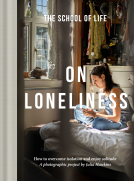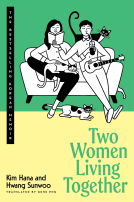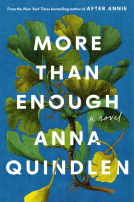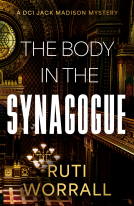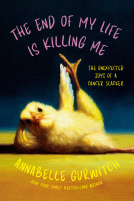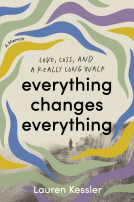
The Domestic Revolution
How the Introduction of Coal into Victorian Homes Changed Everything
by Ruth Goodman
This title was previously available on NetGalley and is now archived.
Send NetGalley books directly to your Kindle or Kindle app
1
To read on a Kindle or Kindle app, please add kindle@netgalley.com as an approved email address to receive files in your Amazon account. Click here for step-by-step instructions.
2
Also find your Kindle email address within your Amazon account, and enter it here.
Pub Date Oct 20 2020 | Archive Date Sep 30 2020
W. W. Norton & Company | Liveright
Talking about this book? Use #TheDomesticRevolution #NetGalley. More hashtag tips!
Description
“The queen of living history” (Lucy Worsley) returns with an immersive account of how English women sparked a worldwide revolution—from their own kitchens.
No single invention epitomizes the Victorian era more than the black cast-iron range. Aware that the twenty-first-century has reduced it to a quaint relic, Ruth Goodman was determined to prove that the hot coal stove provided so much more than morning tea: it might even have kick-started the Industrial Revolution.
Wielding the wit and passion seen in How to Be a Victorian, Goodman traces the tectonic shift from wood to coal in the mid-sixteenth century—from sooty trials and errors during the reign of Queen Elizabeth I to the totally smog-clouded reign of Queen Victoria. A pattern of innovation emerges as the women stoking these fires also stoked new global industries: from better soap to clean smudges to new ingredients for cooking. Laced with uproarious anecdotes of Goodman’s own experience managing a coal-fired household, this fascinating book shines a hot light on the power of domestic necessity.
About the Author:
Ruth Goodman is the author of multiple books on English domestic history, among them How to Be a Victorian. An historian of British life, she has presented a number of BBC television series, including Tudor Monastery Farm. She lives in the United Kingdom.
Available Editions
| EDITION | Hardcover |
| ISBN | 9781631497636 |
| PRICE | $27.95 (USD) |
Average rating from 12 members
Featured Reviews
 Joanna P, Reviewer
Joanna P, Reviewer
Such an interesting and highly readable work of nonfiction by one of the most prolific historical nonfiction writers of her generation. The domestic revolution is about the evolution of heating your home and other various buildings from wood to coal. She also goes into immense detail of actually cutting the wood and how that was the primary way of heat for hundreds of years and how all of that changed. If this sounds boring please believe that the way Goodman writes this a very fascinating journey through history. Highly recommend.
 Anne M, Reviewer
Anne M, Reviewer
The lives of ordinary people can change the world. The domestic lives of those who history tends to ignore in favor of battles and grand conquests can, and does, influence far more than one might imagine. This is Ruth Goodman's premise in The Domestic Revolution: How the Introduction of Coal into Victorian Homes Changed Everything. And she makes a more than convincing argument that the switch from wood burning to coal burning in England, starting around 1600 (despite the subtitle crediting the Victorians) did in fact change everything in Britain. Goodman specializes in living history and has decades of personal experience in wood burning and coal burning- how to burn, how to cook, and how to clean- that she shares to help flesh out the changes she describes.
Goodman introduces readers to the changing methods of heating homes and cooking by describing how peat, animal dung, wood, and coal all burn differently in a slightly tedious (yet still surprisingly interesting) beginning chapter. Things pick up after that as she explains how homes and furniture changed due to changing heating methods, from rushes and pallets to high standing beds and chairs. The unique British foods like puddings, boiled everything, and mushy peas are explained through a surprisingly simple answer: coal fires and wood fires cook foods differently. Cleaning homes and laundry are gone into in fascinating detail. This all might sound boring to some, but I found it fascinating. This detailed look into the lives of ordinary people- especially the women and servants who rarely left written accounts and whose lives must be guessed at through different approaches- gave me a great appreciation for what it would have been like to live in Britain in the past few centuries.
The Domestic Revolution is a fascinating, well-researched, and well-written book that will appeal to historians, students, casual readers, and anyone interested in how the lives of ordinary people changed with the popularizing of coal burning fires.
I received an ARC of this book from NetGalley in exchange for an honest review
 Reviewer 721928
Reviewer 721928
I'm not exactly how this title made me decide I wanted to read a book about the history of coal stoves, something I've never given any thought to before, but then I couldn't put it down.
Goodman starts with forestry, shares all sorts of facts about the coal industry, shows us how coal reshaped our homes and our furnishings, and how coal shifted the way we eat. Her breadth of knowledge is incredible and her lived experience with the topic makes it fascinating.
I had no idea she's a celebrity historian with a TV series behind her, but reading this makes it clear why. As soon as I finished this I picked up two of her previous books, which were just as interesting and enjoyable to read.
Readers who liked this book also liked:
Kim Hana; Hwang Sunwoo
Biographies & Memoirs, Nonfiction (Adult), Parenting, Families, Relationships
Annabelle Gurwitch
Biographies & Memoirs, Health, Mind & Body, Humor & Satire
Benjamin Reynaert
Arts & Photography, Home & Garden, Reference

